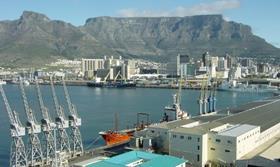
While the water situation in South Africa’s Western Cape eases due to reasonably good winter rains, it has emerged that the region lost around R5.9bn due to the effect of the drought.
The losses were revealed at the World Wildlife Fund (WWF) Agricultural Producers’ Day near Robertson in the Cape.
WWF South Africa’s latest Water File indicates that around 30,000 people lost their jobs because of the water shortages and drought, while exports dropped by between 13 per cent and 20 per cent due to reduced farming outputs and additional losses in income as export volumes declined.
The latest statistics on the level of dams in the Western Cape provides a more optimistic picture for the year ahead, although authorities indicated that harsh water restrictions will not be lifted until the combined dam levels supplying Cape Town reaches 85 per cent. This week these levels were at 55 per cent compared with 26 per cent at the same time last year.
The WWF report states that many hectares of fruit trees and vineyards have been removed earlier than the normal replanting date due to the lack of available water, as well as to prevent disease and pests from spreading. Stock farmers have also suffered heavy losses and as a result many agricultural businesses have risked bankruptcy.
According to the WWF, farmers will have to get innovative in order to produce more with less, especially when it comes to freshwater availability. Precision farming is becoming increasingly important.
One climate science specialist is reported as saying that the Western Cape will become drier and experience moderate to strong warming over the next 100 years. By 2050 the rainfall in the region will probably drop by some 30 per cent compared with current levels.
In one of the Cape’s table grape and citrus growing regions, growers are much more relieved because the main storage dam, the Clanwilliam Dam, is virtually overflowing after good rains in the upper reaches of the Olifants River.
This region has suffered badly because of the drought, particularly in the area below the Clanwilliam Dam and around Klawer and Vredendal where growers had to abandon vineyards because of a lack of water. With the dam full, the recovery can begin.
However, the canal system supplying water to these growers in one of the Cape’s most fertile fruit growing regions, which is now almost a century old, is falling apart. It will need major repairs if much of the accumulated water is to be saved for proper use.
Recent rain and snow also continue to feed the irrigation dams in the Ceres and Hex River regions, while the Berg River has also been flowing much stronger as dams in its upper catchment area are filling up.
For dam watchers the state of the Theewaterskloof Dam, in the Villiersdorp region, which is the biggest storage dam in the region, remains the most important barometer of the state of water in the Cape. It is now more than 40 per cent full, having risen from barely 9 per cent in May to the current level.



